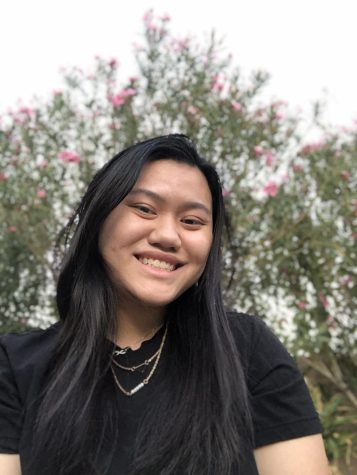Returning to School: Hybrid Model
April 16, 2021
Students of grades 9-12 were able to return to school on April 16th under the Hybrid Model.
The hybrid model consists of a limited amount of students going to school for two days and for two classes. Cohort A has students going to school on Mondays and Tuesdays, while Cohort B goes to school on Thursdays and Fridays, leaving Wednesdays with no students, for school to be cleaned.
“My parents have felt a little guilty for not letting us go out with friends or anything throughout this whole pandemic,” freshman Alazzia Romero said. “They wanted me to get an interaction that they can’t provide me.”
When schools closed in CCSD March 15th, 2020, it left some students disappointed that they couldn’t finish up their sports season or go to clubs anymore. Being left isolated in homes had limited students’ ability to interact with one another, especially when it came to seeing friends or staying safe.
“My mental health wasn’t at its best and I thought maybe going back would help,” junior Lia Martinez said.
According to the Journal of Medical Internet Research, out of the 195 students, 138 (71%) indicated increased stress and anxiety due to the COVID-19 outbreak. Bringing students back to school under safe conditions would help them feel less lonely, however that is not a full strategy in tackling mental health.
“The reason I went back to school was because I wanted to see people,” freshman Jean Pierre Hernandez said. “At least I’m able to see people for two hours…”
Interaction with others is one of the reasons students chose to go back to school, seeing as though it’s been over a year since schools has been back in place for high schools.
“It was the first time I saw a friend in almost a year,” Hernandez said. “And I wanted to hug him, but [I couldn’t.]”
While students may have the ability to go back to school, that does not mean they can do as they choose. Students must obey signs and stay at a distance with others, as well as having to wipe down desks after each class.
“I know it’s inevitable to be close to someone who may have [COVID],” Romero said, “but… the school looks like it’s doing everything they possibly can.”
So far, only three positive cases have been seen at Spring Valley, and with every new case, Principal Tamathy Larnerd sends out a detailed email of the case and contacts those who may have been in contact.
“I feel like I became closer with my teachers and I have a more positive outlook on life,” Martinez said.
“In school, I feel more comfortable to get help right away and complete my work during that time,” Romero said.
Being at school gave students the comfort to ask for help and to talk to teachers in-person rather than through a screen, and being more active in their work and taking it seriously.
“It gave me validation in.. making the decision to go back,” Romero said.
While the future proves itself to be complex, and with Nevada having plans to open up at 100% capacity, it feels as though schools are headed back to a sense of normalcy.
“I feel like with the right organization and procedures, we should be able to go back fully this year,” Martinez said.


